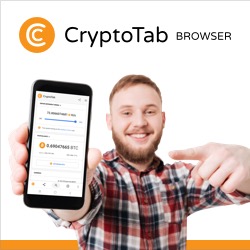What is Pi Coin and the Pi Network?
Pi Coin is the native cryptocurrency of the Pi Network, a blockchain project launched on March 14, 2019, by Stanford PhDs Dr. Nicolas Kokkalis and Dr. Chengdiao Fan. It was built around a novel idea: allow users to “mine” cryptocurrency directly from their mobile phones — no energy-intensive hardware needed.
The concept quickly went viral, with the app reaching over 40 million users by 2025. The promise? Mine Pi for free, with no financial risk. The result? A massive user base incentivized by daily login streaks and referral rewards — a strategy that mirrors viral growth loops used by social apps.
FOMO-Driven Marketing and Free Token Incentive
What really fueled Pi Network's rise wasn't just its mining model — it was its psychological play on scarcity and FOMO.
Users were told mining rates would drop over time and were encouraged to invite others to boost their earnings. This created a viral loop: join now or miss out forever.
And while there was no upfront payment, the app incentivized millions to hand over their personal data and stay engaged for years — all for tokens that, as of today, still can’t be officially traded.
 By TradingView - PI3USD_2025-04-03 (1M)
By TradingView - PI3USD_2025-04-03 (1M)The KYC Bottleneck and Data Concerns
In 2023, the network began requiring users to complete a KYC (Know Your Customer) process to access their mined tokens. This included submitting government-issued IDs and facial recognition — a big step for a project without an open blockchain or publicly verified smart contracts.
For skeptics, this raised red flags:
Who has access to this data?How is it stored?What happens if the project fails?While KYC is standard in many crypto projects, Pi Network’s lack of transparency and centralization leaves too many questions unanswered.
Pi Coin on CoinMarketCap and TradingView: The IOU Illusion
If you’ve searched “Pi Coin price” on Google, you’ve probably seen it listed on Bitget, CoinMarketCap, CoinGecko, and TradingView — showing real-time prices, volume, and even trading pairs.
So… is Pi Coin tradable?
The short answer: Not really.
Here’s why:
The Pi Coin listed on exchanges like HTX (formerly Huobi) and BitMart is an IOU token — a speculative placeholder issued by centralized exchanges.
These IOU versions are not connected to the actual Pi coins held in the Pi Network app.
Users cannot withdraw Pi from their Pi Wallet to those exchanges — and vice versa.
The Pi Core Team has publicly warned that these exchange listings are unauthorized and not part of the official Pi ecosystem.
So, while Pi may appear to be “live” and tradable, the official Pi Coin remains in a closed environment and cannot be moved or exchanged freely.
 By TradingView - PI3USD_2025-04-03 (YTD)
By TradingView - PI3USD_2025-04-03 (YTD)Lack of Transparency and Delayed Deliverables
For five years, the Pi Core Team has promised the eventual launch of an Open Mainnet — where users can freely trade and use their Pi Coins on-chain. As of April 2025, that milestone remains unmet.
Key missing elements include:
A fully deployed open blockchainAuditable smart contracts or tokenomicsClear policies around data use and storageIndependent code reviews or external auditsThis lack of transparency continues to shake community trust, especially among users who’ve waited years to access their balances.
Pi Coin Price History: What Do the Numbers Mean?
According to CoinMarketCap, as of April 2025:
Current Price: ~$0.6624Market Cap: ~$4.5 billionCirculating Supply (Speculative): ~6.79 billion PIAll-Time High (ATH): $2.98 (Feb 26, 2025)All-Time Low (ATL): $0.6152 (Feb 20, 2025) By TradingView - PI3USD_2025-04-03 (All)
By TradingView - PI3USD_2025-04-03 (All)But here’s the catch:
These numbers reflect speculative IOU trading, not the actual coins inside the Pi Network ecosystem.
Despite hitting an ATH of nearly $3 earlier this year, Pi has since entered a downtrend, losing over 75% of that value in just weeks — likely driven by:
Increased token unlocksSpeculative sellingLack of real trading utilityContinued mainnet delaysPi Coin Prediction for 2025: What’s Next?
Making a Pi Coin prediction in 2025 is like forecasting a storm from inside a fog: there are signals, but no certainty.
 By TradingView - PI3USD_2025-04-03 (3M)
By TradingView - PI3USD_2025-04-03 (3M)If the Open Mainnet finally launches, and if users can freely move their tokens, we could see:
Real price discoveryActual utility via apps and marketplacesPotential listings on major exchangesBut if delays continue and transparency remains lacking, Pi Coin risks fading as a missed opportunity fueled by hype, not substance.
Final Thoughts: Is Free Crypto Ever Really Free?
Pi Coin may not be a scam in the classic sense — you didn’t pay money, after all. But many users have spent years mining, submitting personal data, and promoting a project with no clear utility, token freedom, or transparent roadmap.
The promise of “free tokens” has created a global community, but as of 2025, that community is still waiting — not trading.











 Bengali (Bangladesh) ·
Bengali (Bangladesh) ·  English (United States) ·
English (United States) ·